In the bid to balance the desire to live amongst nature with the modest footprint of today’s homes, designer Victoria Azadinho Bocconi looks for inspiration in the depths of the Amazon jungle.

February 27th, 2023
“While I was designing Hevea, one of the strongest and most evocative images from the stories of Brazil, my homeland, that characterised my childhood came to me: the process of rubber extraction,” Victoria Azadinho Bocconi shares. “I was always fascinated by the graphic motifs that were created on the trunks and the simplicity of collecting this juice that gushed out with a bucket.”
It’s impossible not to recognise this striking visual cue in Hevea’s organic design. Anchored by the strong line of the central, laser-perforated stem and the pot-holders that hang from it, the seemingly elementary structure of the object is seeping with unmistakable geographical and personal references.

But Hevea is as practical as it is figurative – developed by Victoria under the helm of Pedrali’s recognisable name, this versatile piece has been conceived to enable designers to capitalise on the vertical dimensions, and introduce greenery into any space, no matter how small.
“Hevea was born as a plant holder with a single stem, designed for homes like mine,” the designer explains. “But, once I presented the project to Pedrali, who have a particular interest in the contract furniture, we decided to exploit the product’s modularity to create a green wall, making it suitable for offices and restaurants.”

As a result, the collection boasts both the single-stem and the partition versions of the design. The single-stem Hevea boasts a central steel core with six polypropylene pots attached to it, while the partition augments the capabilities of the more basic design, with three columns and 15 pots. The containers can be connected to the metal axis either opposite one another or forming a spiral, and are easy to both affix and remove.
This flexibility has practical and creative benefits – and in both cases the plants take centre stage. “The main reason why Hevea’s pot-holders are not fixed is the need to clean the piece, remove the plants and any extra water that may stagnate at the bottom,” Victoria explains. “With the attachment points located along the stem, on the other hand, I wanted to give the user the freedom to arrange the pots differently, according to the plants. Some of them grow taller, others tend to expand horizontally – depending on one’s own plants, everyone can position the pots in a way that accommodates the different growths.”

The Italy-based designer remarks that it’s the plants that make each Hevea completely unique. “Even if the plants are of the same species, no two are the same and, therefore, each composition will be different.”
This loyalty to foliage is further underscored by the material choices, with metal and plastic selected not only because of Pedrali’s know-how and the desire to minimise the use of raw materials without affecting product performance and durability. “The association between rubber and polypropylene is certainly quite immediate, even though they are two very different materials,” Victoria explains.

She also points out that the shape of the pot-holders is reminiscent of common terracotta pots, “anonymous objects that we encounter every day, which then embrace the tube in an organic way.” This correlation is augmented through the mindfully curated palette – the white and black have been coupled with green and terracotta. Green is an obvious expression of the colour of the plants, and the latter harkens back once again to the materiality we are all familiar with from garden pots. “I like the idea that the functionality of Hevea is recognizable even when it’s empty, without plants,” she says.
However, while Hevea’s right at home as a supporting act to vegetation, there is another – just as practical, albeit more whimsical – side to this versatile object. The most basic design in the Hevea collection, boasting a shorter stem and a different style of pot, shifts the focus away from plants to something else altogether.

“This idea started off as a joke,” Victoria smiles. “While talking about Hevea with some friends when it was still under evaluation, I said playfully that if it went into production, I would have thrown a party and filled the vases with ice and beer to celebrate. It was natural then to imagine it with a shorter stem, next to a bistro table, holding a nice bottle.” That’s how the delightfully unexpected Hevea Ice Bucket was born.
Wonderfully multifaceted in its unpretentious expression, Hevea houses a multitude of cues, suits a variety of environments, and can take on quite a few functions. And while it might be challenging to find just one word that encapsulates the intricate layers of this stunning design, the three Victoria has settled on, do it pretty well.

“Hevea is discreet because it simply acts as a support for the real protagonist: the plants,” the designer sums up. “It is versatile because it adapts to different spaces and uses, becoming a product that truly suits to every situation. And it’s alive like the plants it houses, it grows and changes over time.”

INDESIGN is on instagram
Follow @indesignlive
A searchable and comprehensive guide for specifying leading products and their suppliers
Keep up to date with the latest and greatest from our industry BFF's!
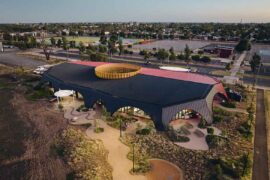
At the Munarra Centre for Regional Excellence on Yorta Yorta Country in Victoria, ARM Architecture and Milliken use PrintWorks™ technology to translate First Nations narratives into a layered, community-led floorscape.
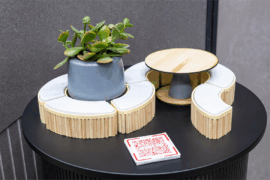
From the spark of an idea on the page to the launch of new pieces in a showroom is a journey every aspiring industrial and furnishing designer imagines making.
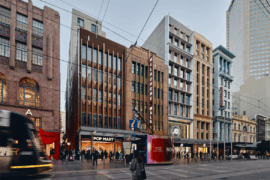
Merging two hotel identities in one landmark development, Hotel Indigo and Holiday Inn Little Collins capture the spirit of Melbourne through Buchan’s narrative-driven design – elevated by GROHE’s signature craftsmanship.
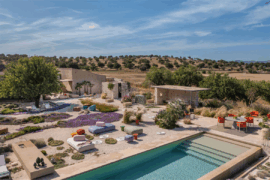
Entertaining outdoors is fundamental to Italian culture, and homes, hotels and restaurants embrace patios, terraces and gardens that celebrate scenery, climate and comfort.
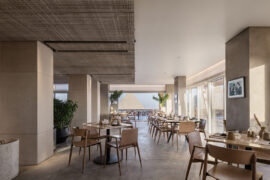
Pedrali’s Nemea collection, designed by Cazzaniga Mandelli Pagliarulo, marks 10 years of refined presence in hospitality and commercial spaces around the world. With its sculptural timber form and enduring versatility, Nemea proves that timeless design is never out of place.
The internet never sleeps! Here's the stuff you might have missed
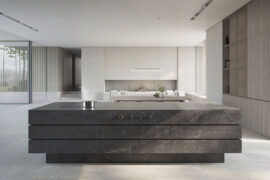
For those who appreciate form as much as function, Gaggenau’s latest induction innovation delivers sculpted precision and effortless flexibility, disappearing seamlessly into the surface when not in use.
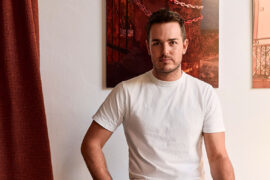
From furniture and homewares to lighting, Dirk du Toit’s Melbourne-based studio Dutoit is built on local manufacturing, material restraint and the belief that longevity is central to sustainable design.